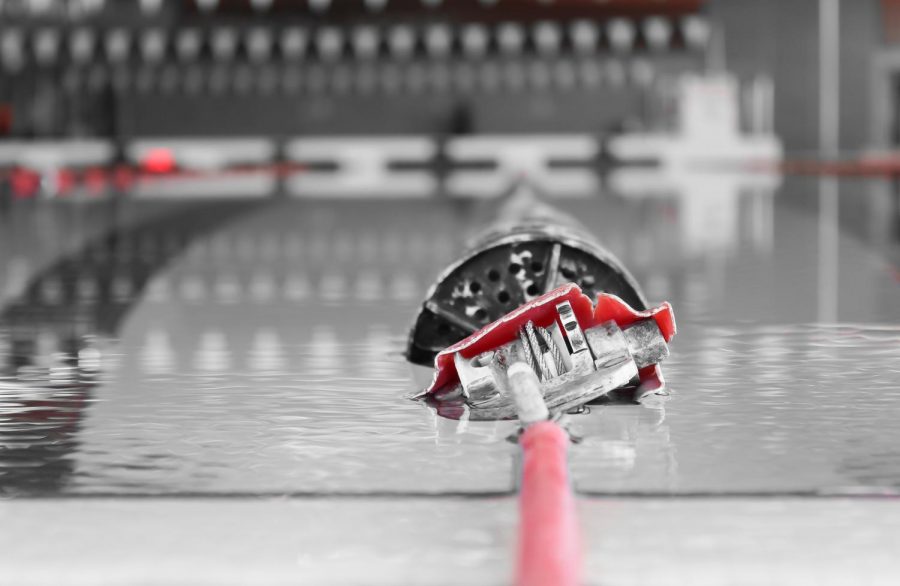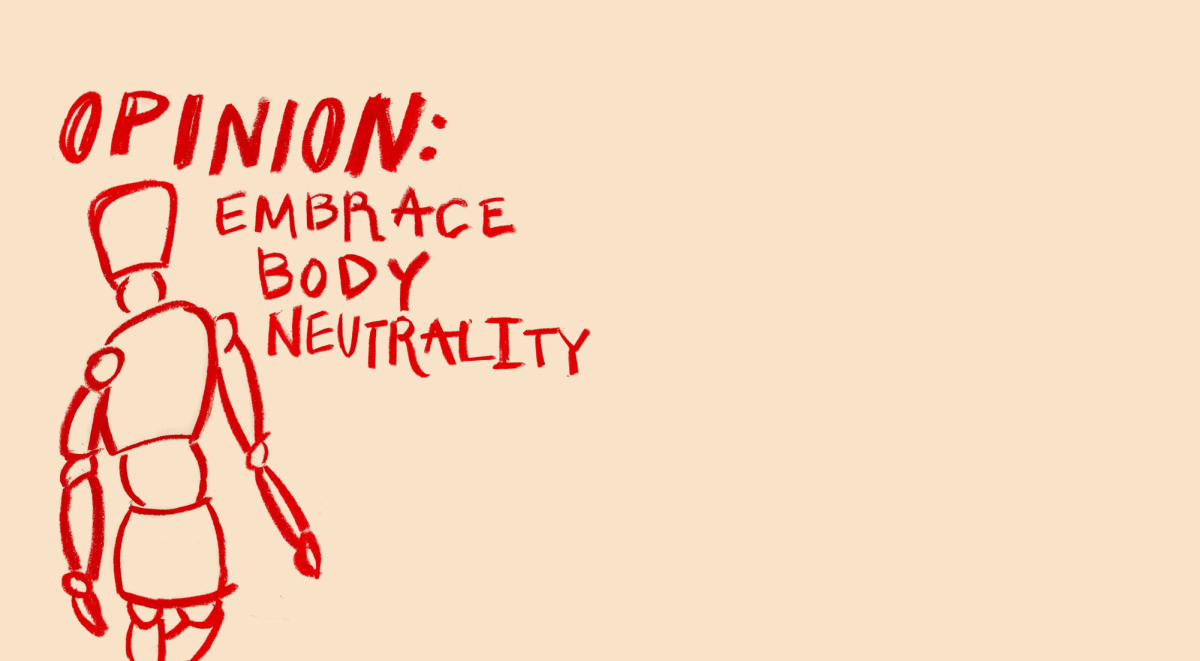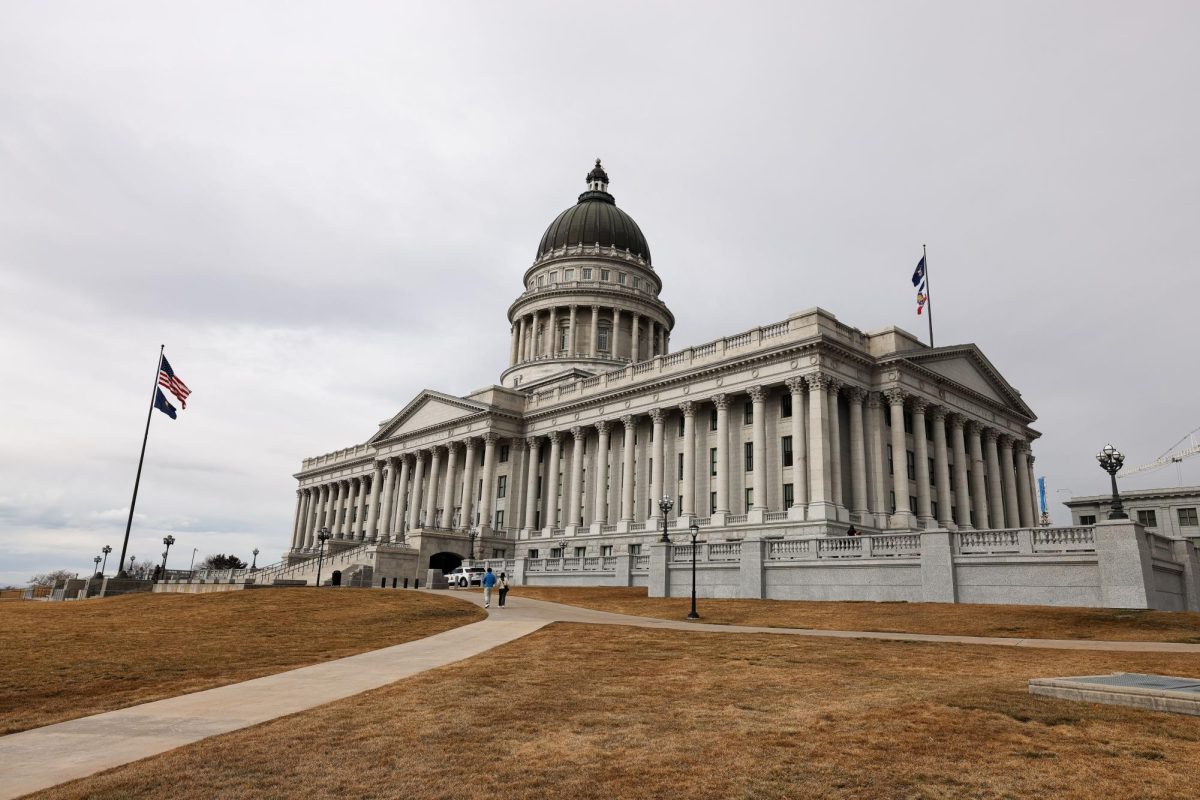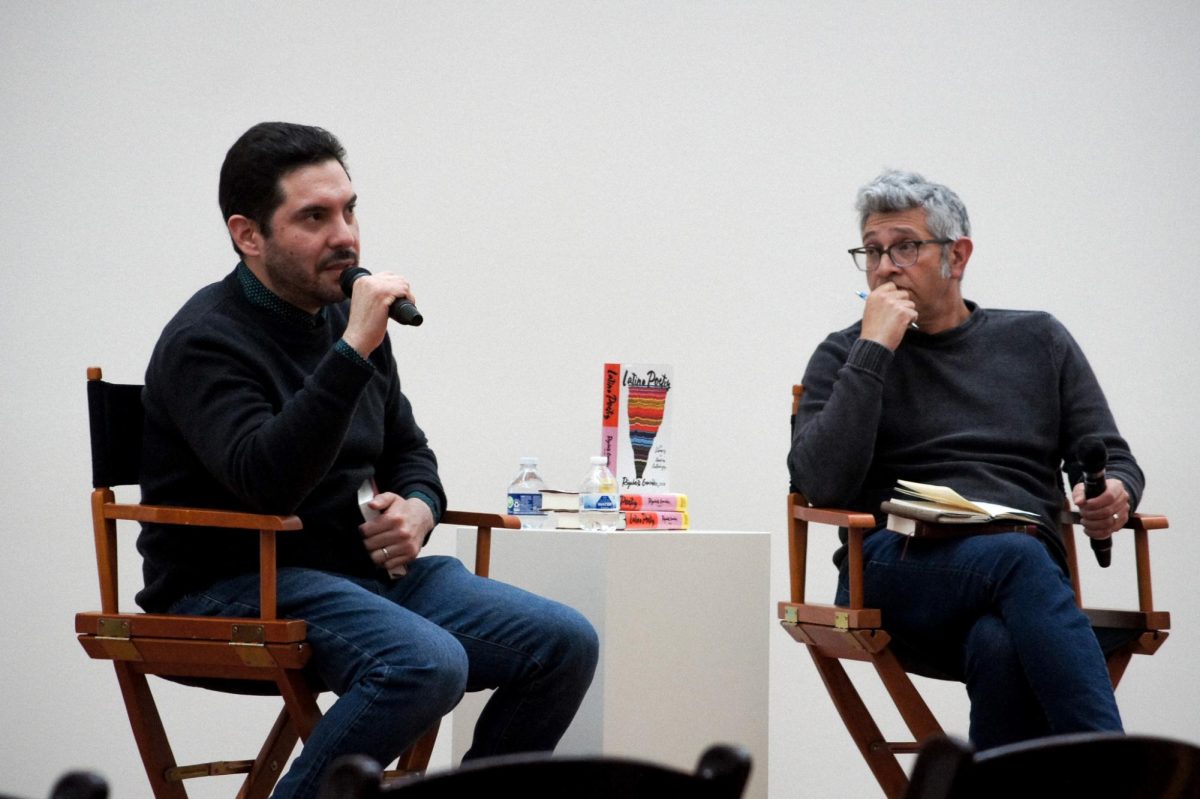Kincart: Swimming is a Privilege
Crimson Lagoon Lane Line April 22 2021 (Photo by Hailey Danielson | Daily Utah Chronicle)
April 25, 2021
As summer approaches, I grow more excited to spend days at the pool. My fondest childhood memories were at the pool—there was a point in my life where I would call the pool my second home. I spent mornings at the pool for swim practice and taught lessons afterward. I’d go home for a bit or lifeguard for a shift and then help set up for a swim meet. It wasn’t uncommon for me to spend upwards of six hours a day at the pool. As a kid, I loved swim lessons, which led to years as a competitive swimmer, swim instructor and lifeguard. The teammates, coaches and coworkers I met through swimming played an important role in my life. All of these positive experiences stem from privileges afforded by my socioeconomic status and access to pools.
A 2017 study found that African American and Hispanic children are more likely to drown than Caucasian children. This is because swim lessons are a privilege tracing back to the era of segregated pools. There’s an access problem with public swim lessons that translates into larger issues of racial inequality in sports and safety (both fiscal and physical).
This inequality begins at swim lesson access. Swim lessons offered by Salt Lake County Parks and Recreation have waitlists that vary from two to six children depending on the class. There’s definitely a greater demand for swim lessons than there are available classes. In an email interview, Clayton Scrivner, Public Relations and Marketing Manager for Salt Lake County Parks and Recreation, said classes at the “beginner skill level” fill up quickly. Scrivner also noted that “the vast majority of registrations are made online.” This is problematic as the digital divide still is a problem. African American and Hispanic households are 1.3 to 1.4 more likely to experience limited access to computers and the internet compared to white households. This registration system disadvantages the same people who would benefit most from lessons at a public pool. The people who need less expensive swim lessons are the same people who will more likely face barriers to online registration. On a more positive note, Salt Lake County Parks and Recreation offers lower rates for swim lessons based on free and reduced lunch thresholds. Nonetheless, if registration continues to disadvantage minorities, affordability isn’t the main problem.
When swim lesson access favors wealthier white people, it becomes visible in water sports. Only 1% of almost 400,000 swimmers registered under USA swimming are African American. The 2012 men’s US Olympic team had three swimmers out of 24 who were POC. The women’s team had two POC members out of 25. Goldman Sachs found that there is a strong association between money and medals in swimming. Clearly, swimming is a rich and white sport and it will continue to be if we don’t solve the swim lesson access problem. This issue is the same for other water sports. Water polo is a “rich-kid sport” with Black and Hispanic students making up less than 10% of the teams in the Ivy League. Howard University is the only HBCU left with a swim team—which is indicative of race disparities in swimming.
These race disparities have severe consequences. In swimming pools, African-American children are five and a half times more likely to die than white children of the same age. This difference is most prominent at the ages of 11 and 12, where African Americans are 10 times more likely to die than white children. Additionally, only 11.9% of lifeguards are Black, whereas 61.3% are white. The shocking statistics don’t stop here. There’s a strong correlation between parents’ comfort with swimming and a child learning how to swim. If Black parents aren’t comfortable in the water, their children most likely won’t be either. This intergenerational cycle increases drowning rates while decreasing participation in water activities. This decreased participation is seen in water sports and lifeguarding. Lifeguarding is a convenient summer job for teenagers and its economic benefits should not be exclusive to white people. The issue we are looking at is systemic and has life-threatening consequences.
I love swimming. It holds a special place in my heart because of all of the opportunities it gave me. But, it’s time we recognize its many flaws. It’s abhorrent that these inequalities still exist. If swim lesson access is improved, a lot of these issues will be solved with time. But time is not on our side as more Black & POC children die by drowning. We need a more robust and equitable system now. Let’s start addressing this problem by creating swim lesson programs and local policies specifically for minorities. We need to address the problem head-on in order to see any change.













